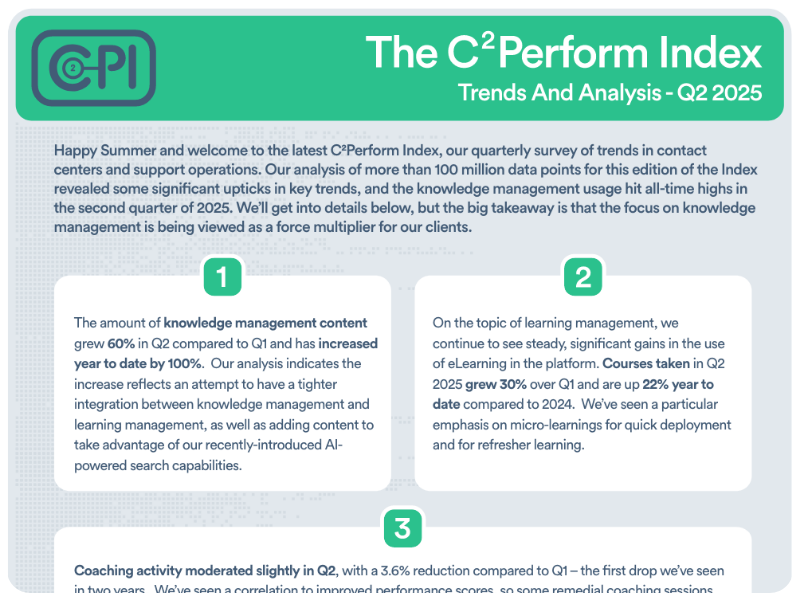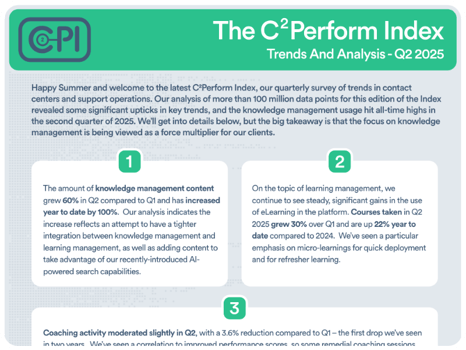Employee coaching is a critical part of helping your team members develop and realize full potential. Having the right coaching tools can make managing employee performance and development much easier. But, have you ever wondered what to look for in an employee coaching platform?
Let’s take a look at why it’s a good idea to have a platform solution for coaching employees and not just a single tool for running a coaching session as well as what a coaching platform should have.
Why You Need an Employee Coaching Platform
So, why do you need a coaching platform? Why not just use paper notes and good old-fashioned intuition to get through employee coaching sessions? Here are a couple of quick stories to highlight some of the potential issues of coaching without access to the right tools and the benefits of having a solid coaching platform in place:
Coaching Employees the Hard Way
Sheri is a manager for a call center at Epimetheus Inc. Her sales team has been struggling to meet its goals for a while now, so she decides to do some coaching to help them get their numbers up. She puts together a report on employee performance for each of her team members to try and identify which employees need help and which ones are already in a good place so she can prioritize her time and effort.
She writes down what each employee’s performance statistics are and then manually adds them to a Google Doc and spreadsheet. She does all this so she can accurately gauge progress towards goals and make a more objective assessment. This manual process takes about an hour of her time.
Then, she also manually records performance notes about each employee. She wants to dig down into their performance numbers and other information to uncover potential issues that she can help fix. Unfortunately, she doesn’t have a great team communication system in place to collect employee feedback. This tends to take anywhere from 15 to 30+ minutes per employee.
So, Sheri spends a lot of extra time reaching out to employees for feedback and getting stymied because people don’t want to rock the proverbial boat or the information she needs isn’t readily available.
Once she has her priority list hammered out, Sheri starts inviting employees for one-on-one sessions to go over performance and discuss ways to improve performance. During the coaching session, she’s constantly having to flip through notes and double-check information.
At the end of the coaching, she’s communicated a few important notes and has helped her employee a bit, but she wasn’t able to get the kind of open feedback she wanted as the employee was too nervous to talk about something she thinks might get her or others on the team in trouble (or might sound too much like a pointless complaint).
After the coaching sessions are all done, Sheri sends her sales agents a list of key points to work on. However, Epimetheus Inc. doesn’t have a robust learning management system in place to guide employees on their learning journey. So, Sheri's learning plans languish unused.
The end result was a lot of time consumed for a very minimal and temporary bump in sales numbers as a few employees earnestly applied what they learned in coaching and others promptly forgot it.
But what could have happened if Sheri had the tools she needed to streamline the whole process of collecting information, applying insights to desired coaching outcomes, and following up with employees after the coaching was completed?
Using a Coaching Platform to Streamline Performance Management
Alicia is a call center manager at Prometheus Consulting, Inc. Prometheus recently hit a slump in call center performance and decided to fix things by applying a new set of employee performance management tools that included performance tracking, team communications, dynamic coaching, and learning management in a single platform.
When Alicia gets the go-ahead to start coaching her team, she’s first given a crash course on the new tools and how to use them. So, the first thing she does when she wants to see who on her team needs the most help is open up her team’s performance dashboard. On this dashboard, she can immediately see who on her team is crushing their goals and who needs a little help.
Then, she opens up the team communication tool to check for messages to the employee suggestion box—a team chat that lets employees anonymously suggest improvements to the workplace or make comments about things that are bugging them. Without the fear of retaliation, more employees are sharing information about obstacles and annoyances at work. While some of the feedback isn’t strictly relevant, there are a lot of things identified that Alicia can use to improve the workplace.
Next, she coordinates with the highest-need employees to schedule some one-on-one time with each of them. Before each meeting, she compiles a few notes about where they are on their goals, recent development activities like training and quality assurance evaluations, and other info. This is easy to do because all of the pertinent information about her employee is in one place.
Best of all, she can easily see the results of her last coaching session with her team member and any items that may need to be revisited in this session.
During the meeting, she starts with a quick compliment about one of their achievements or something positive they did for their coworkers and then gets down to helping them improve their skills. With KPI dashboards and a coaching solution at her fingertips, Alicia is able to guide the conversation and address each of the employee’s biggest opportunities for improvement.
After the coaching session, Alicia sets up a learning plan in the company’s learning management system (LMS) for the employee to complete by a set date. Each week, she’s able to check the LMS tool to see how much of the training the employee has attempted and which modules have been successfully completed. If they’re having trouble completing some modules, Alicia can set up additional coaching to focus on those specific weak points.
To supplement the coaching and LMS, Alicia takes a look at her top-performing agents and asks if any of them would like to become workplace mentors. A few of them agree and start mentoring both new employees and the ones struggling hardest to meet their goals.
Eventually, Alicia’s team starts posting better results in their sales—helping the whole business recover from the slump.
Most importantly, Alicia has reduced the amount of time spent preparing for a coaching session by 30-50%, so she spends more time coaching and less time preparing.
What to Look for in a Coaching Platform
In both of the stories listed above, the team leaders were motivated and competent at what they did. They both wanted to help their teams excel and tried their best to do so.
What separated the two were the resources they had available to them. One had a barebones, standalone coaching solution that didn’t integrate with any of their other business solutions—so she had to manually create reports to create coaching notes, couldn’t get post-meeting feedback, and didn’t have a way to follow up coaching with learning management. This led to a reduction in the efficacy of her coaching despite putting in more time and work.
The other manager was able to get everything she needed to maximize results in a single convenient resource before, during, and after the coaching session was complete.
So, what should you look for in a complete coaching platform? Here are a few things to keep in mind:
- Performance Tracking. Is there an easy way to track employee performance at a glance so you can apply it to your coaching session? Having data at your fingertips is critical for identifying the employees who are most in need of coaching and giving them the best guidance.
- Employee Communication Tools. Does the coaching solution have a built-in means of communicating with employees so you can arrange one-on-ones and follow up with them after the session is done? Closing the feedback loop is critical for maximizing results because it helps you find out things that might not be obvious from performance data alone.
- Automated Scheduling and Notifications. Can you set it up so that coaching can be arranged automatically based on a variety of employee performance or QA factors? A great coaching platform can help you skip the tedious task of manually identifying employees in need of coaching so you can focus on more value-added tasks.
- Integrated Learning Management. Can you track whether employees are completing the learning modules/training programs you’re assigning to them in coaching sessions? Having an integrated LMS can help you make coaching more effective by ensuring that it’s followed up with the right learning content.
Get the Most Comprehensive Employee Coaching Solution
Are you ready to transform the way that you handle employee performance management in a way that drives employee success, engagement, and retention? Reach out to C2Perform today to get started!
 English
English Español
Español





.png?height=350&name=Untitled%20(300%20x%20175%20px).png)



